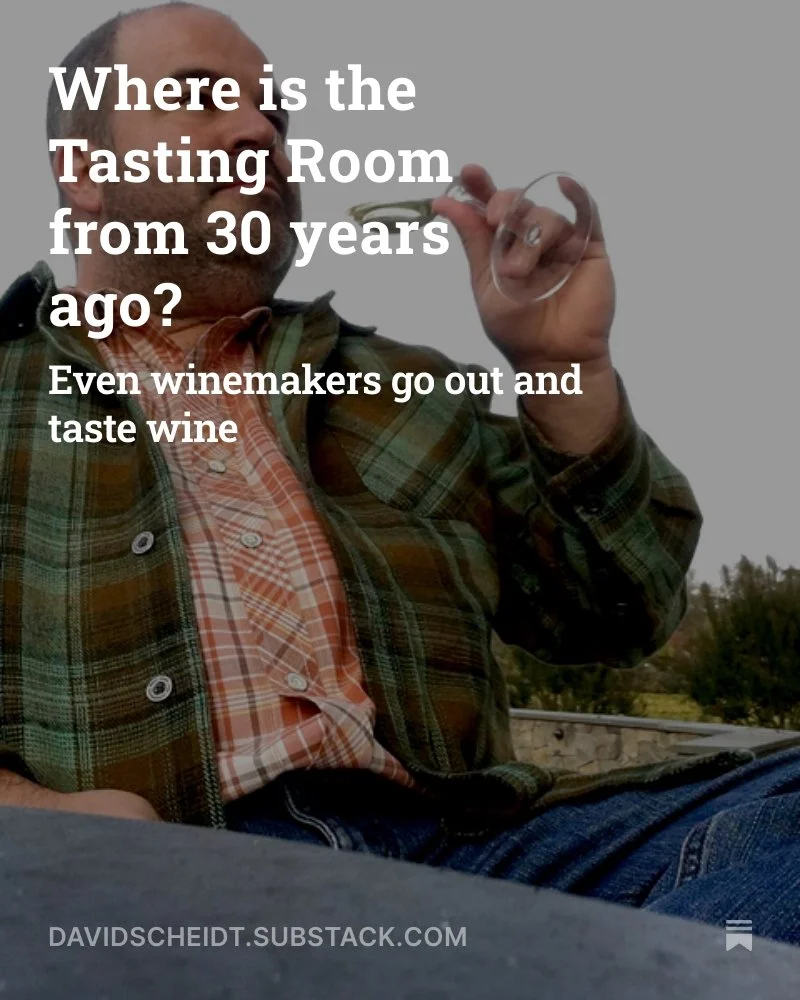I grew up in the ‘70s and ‘80s. I watched network TV and the beginnings of cable. There were plenty of direct, product references to food and wine on television. It’s 2025, what’s changed?
Sherry, Niles?
The 1993 Cheers spinoff Frasier was a favorite of both my brother and mine —network “Must See TV” from an era I enjoyed as a viewer. Frasier ran from last century through 2004.
I just wrote “last century”.
While Cheers centered around a bar with lovable characters, Frasier devoted entire episodes to wine and food—specific ingredients, vintages, regions, labels. The neurotic, pretentious yet endearing snobbery of Frasier and his brother Niles discussing cheese, art, wine, and theatre from Frasier’s stylish bachelor pad was pure gold.
Frasier’s references to food and wine were part of the show, woven into a larger sitcom. It wasn’t a show about food and wine, it was a show about Frasier and the world around him, which included food and wine. Anxious, slapstick situational comedy? Absolutely, and the regular consumption of alcohol was not destructive to the premise of the show or the characters.
Yeah, I got a little Frasier in me. Hammy.
Character development
Today’s bingeable “Must see Streaming” like The Bear on FX are entirely different creatures—complete with sommeliers and Michelin-starred chefs where food and wine aren’t just admirable passions but the show’s entire world. Unlike Frasier’s lighthearted sophistication, The Bear delivers raw, hard-hitting drama. Chef Carmy, the protagonist, attends Al-Anon meetings, deals with nicotine addiction, numerous relationship difficulties, and hasn’t been happy since he was in Europe. Jamie Lee Curtis’s brilliant portrayal of Carmy’s mother Donna, shows her chain-smoking and alcoholism at Christmas dinner, along with borderline personality disorder. Not slapstick late 90s comedy but rather authentic dysfunction.
You’d grab a beer with Norm from Cheers or tolerate Frasier’s stories about southern France at a dinner party. But spending Christmas dinner with the Berzattos, watching Donna spiral out of control while wine and cigarettes fuel the family chaos? Put me in Frasier’s living room any day. Hanging with Donna Berzatto? Hard pass.
That’s me with my Mom making ravioli. No shouting. Evidently plenty of bottled water. No splashed sauce or chaos. Oh sure, there’s some pressure, but the good kind.
Drops of Gold (AppleTV) is highly specific to wine, critics liked it, it had broad international appeal and was picked up for a second season. But let’s face it, it’s obsessive, niche-binge material, which is what streaming content usually is. Niche, not the broad network appeal of Frasier 25 years ago.
We wonder why whole generations of people are drinking less wine? Perhaps because the message and the messengers have changed. Donna Berzzato in The Bear isn’t exactly the role model for fine wine and food the way Frasier was portrayed. Frank Gallagher from Shameless, a dumpster fire of problems. How about Beth Dutton from Yellowstone? Plan any murders lately? All memorable characters with big issues who abuse alcohol.
Can’t I just like to cook? Like to drink wine? Bourbon by the fire? Enjoy a screw-cap Savvy B? Sounds like moderation to me — aka Boring TV.
Today’s must-see TV/streaming programs portray wine and food enthusiasts as either deeply flawed individuals or obsessive perfectionists, often both. While this makes for compelling drama, it’s a far cry from the accessible sophistication that Frasier once modeled.
At a time when the wine industry seeks to attract new audiences, perhaps what we need are fewer tortured chefs, singularly focused wine aficionados, or outright destructive alcoholics with murder on the brain and more characters who can demonstrate that appreciating good food and wine doesn’t require either obsessive expertise or dysfunction.



















